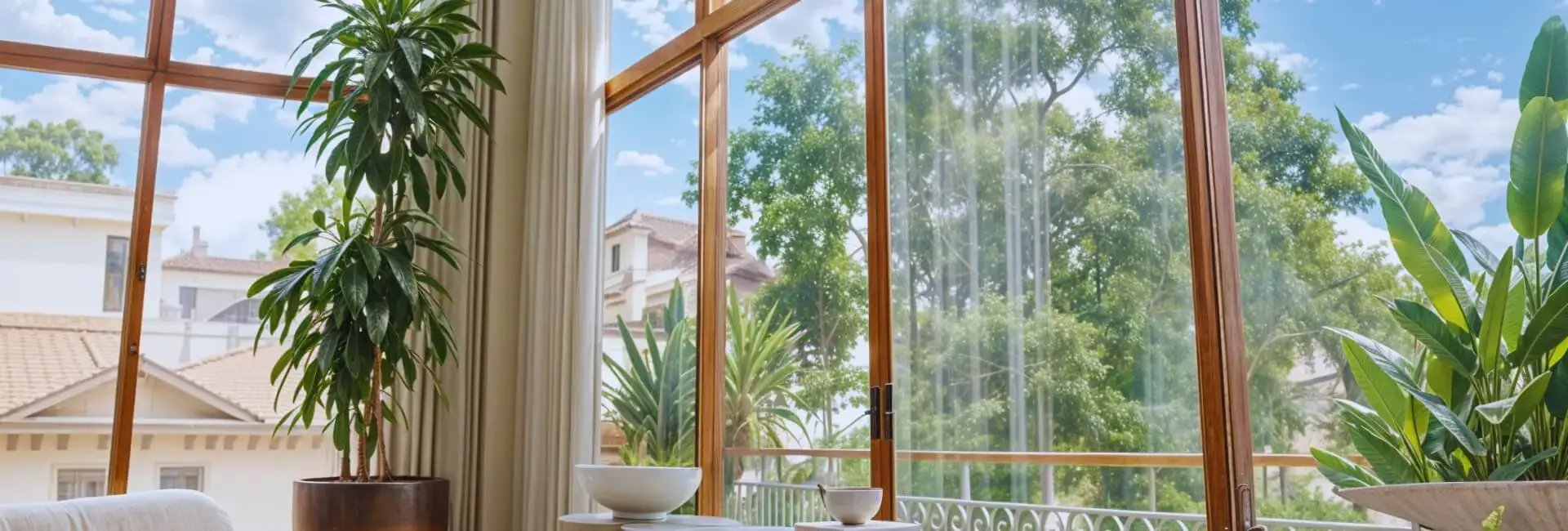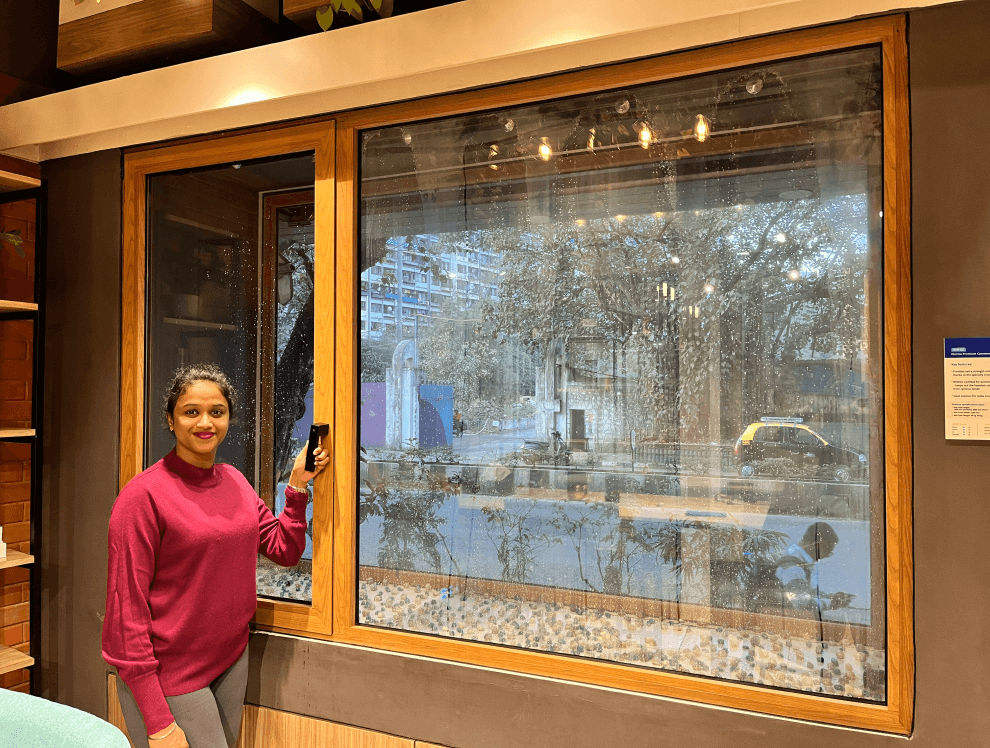
Double vs. Triple Glazed Windows: What’s the Real Difference?
Windows do so much more than let in light—they’re your home’s shield against heat, cold, and noise. If you’re shopping for new windows in India, where weather can range from blistering summers to nippy winters, you’ve likely come across double and triple glazed windows. But what sets them apart? Is the upgrade to triple glazing really worth it? Let’s dive in and unpack the differences in a way that feels like a friendly chat.
The Basics: What are Double and Triple Glazed Windows?
First things first, glazing refers to the glass part of a window. Double glazed windows have two panes of glass with a gap in between, usually filled with an inert gas like argon or krypton. This gas acts like a cozy blanket, slowing down heat transfer. Triple glazed windows? They take it up a notch with three panes of glass and two gas-filled gaps. More layers, more insulation—or so it seems. But let’s dig deeper.
Both types are often paired with sturdy frames, like aluminium, which is a popular choice in modern homes. Aluminium double glazed windows are sleek, durable, and low-maintenance, making them a go-to for contemporary designs, especially in India where aesthetics meet practicality.
Energy Efficiency: Keeping Your Home Cozy
When it comes to energy efficiency, both double and triple glazed windows are miles ahead of old-school single-pane windows. The extra panes and gas layers act as barriers, keeping heat in during winter and out during summer. In India, where you might be battling blazing heat in Delhi or chilly winters in the hills, this is a game-changer.
Double glazed windows typically have a U-value (a measure of heat loss, lower is better) around 1.6 W/m²K. Triple glazed windows, with their extra pane, can drop to an impressive 0.8 W/m²K or even lower. That means triple glazing is about 50% better at stopping heat from escaping. Sounds amazing, right? But here’s the catch: in moderate climates, the difference might not be as noticeable on your energy bill. If you’re in a region with extreme cold or heat, triple glazed windows could save you more in the long run, but the savings might take years to offset the higher upfront cost.
Noise Reduction: Peace and Quiet, Please
Living in a bustling city like Mumbai or Bangalore? Noise pollution is probably your daily nemesis. Both double and triple glazed windows help muffle outside sounds, but triple glazing often has the edge. The extra pane and gas layer can reduce noise by up to 40 decibels, compared to about 32 decibels for double glazing. If you’re near a busy road or an airport, triple glazed windows might be your ticket to a quieter home. That said, double glazing with laminated or acoustic glass can still do a solid job for less money, especially if noise isn’t a constant issue.
Cost and Installation: What’s the Damage?
Now, let’s talk about the wallet. Triple glazed windows are pricier—about 20-30% more than double glazed ones. Aluminium windows designs in India often lean toward triple glazing for high-end projects because they’re sturdy enough to handle the extra weight of three panes.
Installation is another factor. Triple glazed windows are heavier, so your walls and frames need to be up to the task. In older homes or villas, you might need structural tweaks to support them, which adds to the cost. Double glazed windows, being lighter, are often easier to fit into existing setups, making them a practical choice for renovations.
Aesthetics and Light: Brightening Your Space
Windows aren’t just about function; they’re about vibe too. Aluminium double glazed windows are a favorite in India for their sleek, modern look, fitting everything from minimalist apartments to sprawling bungalows. But here’s a downside of triple glazing: the extra pane can slightly reduce natural light transmission—by about 5-10%. If you love bright, airy rooms, this might bug you. Double glazing lets in a bit more light, which can be a plus in homes where natural brightness is a priority.
Durability and Maintenance: Built to Last
Both double and triple glazed windows are durable, especially when paired with aluminium frames, which resist corrosion and handle India’s diverse weather like champs. Maintenance is minimal—clean the glass with a mild detergent and check the seals occasionally to ensure the gas stays put. If a pane breaks or the seal fails, though, triple glazed windows can be trickier (and pricier) to repair since the whole unit often needs replacing.
So, Which One Should You Choose?
It depends on your needs, budget, and where you live. If you’re in a moderate climate and want a balance of cost and performance, aluminium double glazed windows are a solid bet. They’re energy-efficient, decent at noise reduction, and easier on the wallet. If you’re building a high-end home, live in an extreme climate, or want maximum noise reduction, triple glazed windows might be worth the splurge. They’re also a great choice for eco-conscious folks aiming for Passivhaus standards or long-term energy savings.
In India, where aluminium windows designs are trending for their durability and style, double glazing often strikes the right balance for most homes. But if you’re in a noisy urban hub or a chilly hill station, triple glazing could be your secret weapon.
In the End
Selecting between double and triple glazed windows goes beyond the number of glass panes—it’s about understanding your unique needs. Double glazing delivers excellent thermal efficiency and value for most Indian homes, while triple glazing offers enhanced insulation and noise reduction for those in harsher climates or high-traffic areas. Your decision should reflect your environment, budget, and preference for quiet and comfort. Whichever option you choose, both are upgrades that significantly improve your home’s comfort and energy savings.
At Eternia, we specialise in premium, aluminium window and door systems engineered for Indian conditions. Our advanced glazing solutions combine cutting-edge technology with elegant design to ensure your home stays serene, secure, and sustainable. Need help deciding? Our experts are here to guide you every step of the way. Reach out to us today and discover the perfect window solution for your home.
Frequently Asked Questions
It depends on your location and needs. In extreme climates or noisy areas, the superior insulation and soundproofing of triple glazed windows can justify the 20-30% higher cost. In milder climates, double glazing often suffices.
Yes, aluminium is strong enough to support both. Aluminium double glazed windows are popular in India for their durability and sleek designs, but triple glazing works well with aluminium too, especially for larger windows.
Yes, triple glazing can block up to 40 decibels of noise, compared to about 32 decibels for double glazing, making it ideal for noisy urban areas.
Slightly. The extra pane reduces light transmission by about 5-10%, which might be noticeable in rooms where maximum brightness is a priority.


 +91 97699 40000
+91 97699 40000











